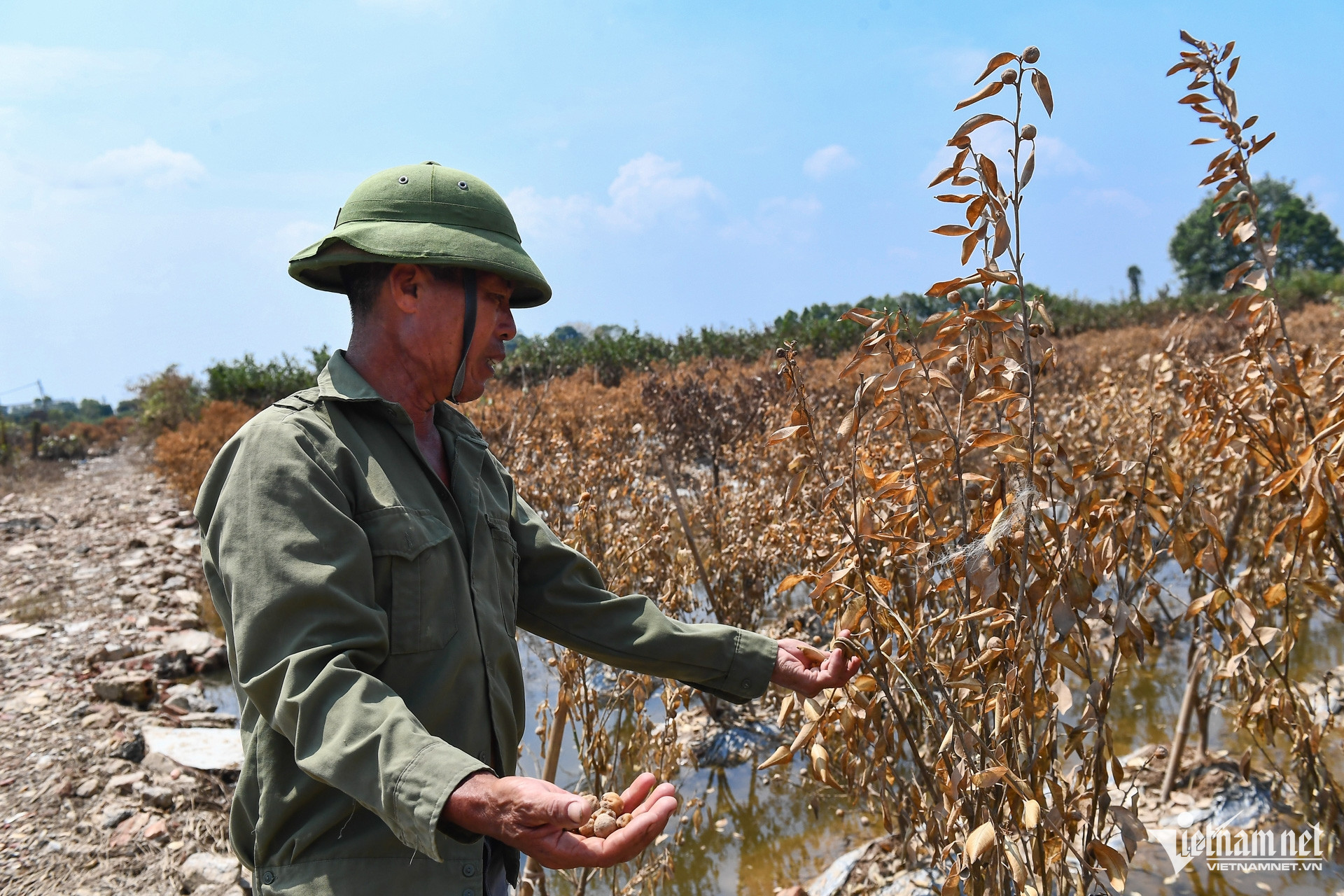
The typhoon caused severe damage in the north worth trillions of dong. The figure keeps increasing as localities are still updating the losses reported by farmers.
But Huu and other farmers who suffered heavily from the typhoon don’t have time to weep about the loss. They have to work immediately to recover their rice fields, orchards and seafood cages.
In the last 10 days, in his 10-hectare orchard where he grows oranges and pomelos in Xe Cu hamlet in Thanh Hai commune in Luc Ngan district, tens of hired workers have been busy pruning broken branches and collecting fallen fruits. The baskets full of fallen oranges and pomelos have been carried out of the orchard and sold to petty merchants at just VND2,000 per kilogram.
“Fortunately, not all fruits fell, there are still some fruits on trees,” Huu told VietNamNet.
His orchard, on the hill is located at the center of Luc Ngan fruit metropolis, which provides 300 tons of oranges and pomelos each year.
This time last year, the trees in his orchard were still laden with fruits. In October and November, the orchard turned yellow as fruits became ripe. This was the time he received many tourists who came to visit his garden.
But just within a few hours when the typhoon made landfall, about 100 tons of oranges and pomelos fell all over the ground, and tree branches collapsed, lying about in disorder. The scene shocked him as the loss was great. But he quickly decided to tidy up the orchard to receive tourists.
“The restoration of the orchard is still being done. I have received some groups of tourists in recent days, free of charge. I will collect fees for sightseeing early next month,” Huu said.
Yen Dung Clean Vegetable Cooperative, which has three growing areas, has reported a loss of VND20 billion because of the typhoon, including VND15 billion worth of infrastructure items.
Tran Thi Thu Trang, deputy director of the cooperative, said she and other cooperative members tried to pick themselves up to resume the cultivation and business.
Trang and other farmers were seen tidying the membrane house and nethouse which collapsed during the typhoon and preparing to grow vegetables outdoors.
At Van Don Aquaculture Center in Quang Ninh, Dang Trung Hoi told VietNamNet that he never imagined that his big assets would be swept away by a natural disaster one day.
In addition to the 1,000 chains of oyster rafts in different communes of Van Don district, Hoi also had a high number of fish cages which were about to be harvested. All the seafood cages and rafts have been damaged by the typhoon.
“Before the typhoon landfall, I had brought all oyster rafts to the shelter of the district and thought it was safe enough. However, the typhoon was harsher than I could imagine,” he said.
“The huge waves broke all the oyster chains and destroyed fish cages. A composite ship was sunk, a wooden boat was swept away and oyster farming equipment was severely damaged,” he said.
Just within a few hours in Vietnam, the typhoon made VND20 billion worth of Hoi’s assets sink in the deep sea.
He is now busy cleaning up and collecting things for reuse and recycling.
“I have suffered heavily, but I need to regain strength and continue working, because I have many workers who need jobs to feed their families,” Hoi said, adding that he hopes he can borrow capital from banks at preferential interest rates to resume production.
Nguyen Van Thanh in Ha Long commune in Van Don, who has been earning a living with aquaculture over the last 30 years, said he has become ‘empty handed’. Thanh had 150 squares of fish which were about to be harvested when the typhoon rushed down. As all assets have been swept away, he still doesn’t know how to restart his business.
Thanh mortgaged his land-use rights certificate for bank loans in the past, so he has no more assets to mortgage for new loans.
“I hope that commercial banks extend debt payment deadline and provide new loans, so we can restart from the very beginning,” he said.
Tam An - Pham Cong - Tuan Nguyen